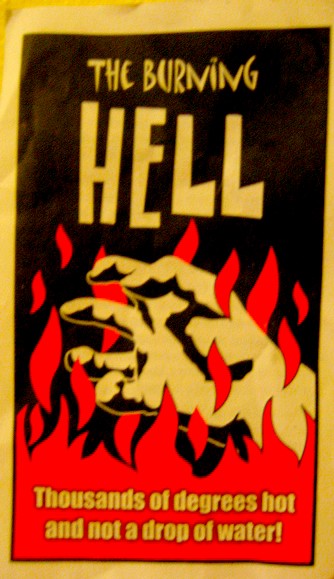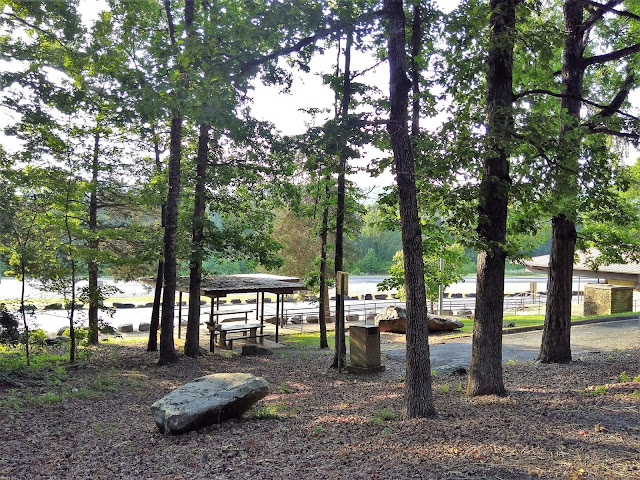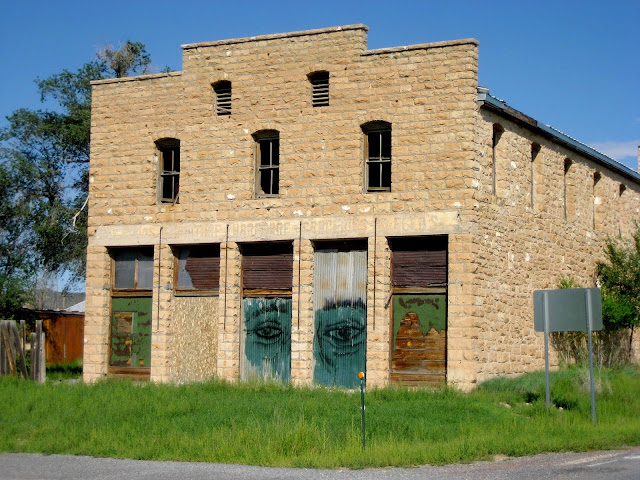 |
| Propped-up building across from courthouse. Livingston, Texas. June 2020. |
NOTE: My COVID-19 posts are all over the chronological map for now; I'll number them down the road.
Typically, a Texan run-off election that follows a spring primary occurs in May. My Plan A had been to be in Livingston, Texas, to vote in person for the run-off. (I'd voted absentee in the spring primary.)
But!
Because of COVID-19, I'd stayed in Tucson a month longer than planned, and I didn't apply timely for an absentee ballot.
But!
Because of COVID-19, Texas postponed this year's run-off until July, and the early-voting period began on June 29.
Huzzah!
I was in my new hometown of Livingston, Texas, at just the right historic moment to vote in person!
I arrived mid-morning. A clutch of candidates waved and greeted me from a corner, mindful of legal campaign distancing limits for election-day protocols.
Inside the courthouse, COVID protocols were evident, with proper spacing for voter queuing taped on the floor, and masked election workers.
Two COVID-related practices caught my attention:
- The first with trepidation, and then delight; and
- The second with rueful acceptance.
The first: The woman at the final voter-processing station sat before a large, white, fold-up case. In front of the case, laid onto the table, were cotton swabs atop l-o-n-g, thin, wooden sticks. As I proceeded along the line, I eyed these swab sticks with a bit of decision anxiety. COVID testing at the polls? Kind of like being able to register to vote when you get a driver's license or library card? Those long swabs - they hurt, right? Knock up against your brain pan to pull out sinus cells? Should I get tested? Yes? No? I mean, I'm right here, right? But this doesn't make sense, does it? COVID testing right here? I don't know ..... Cognitive dissonance.
Upon arrival before the woman and the long, skinny swabs atop those wooden sticks, I learned: Oh! Each voter gets one to use on the touchscreen of the voting machine.
Super clever! I loved it! And myself and I had a big laugh together.
The second: If only two, maybe three, are in the voter-processing area, the set-up was OK for distancing. Alas, the two processing tables were too close together + the two people at each table were too close together, and therefore, voters had to be too close together if each table handled two voters. The problem, in my mind, lay not in the intentions, but the small size and layout of the voting space, including the queue line area.
A better plan, if the weather permitted it (and it did when I was there), might have been to have the first table outside on the sidewalk. Or beginning in the building foyer. Or set up one of those big tents (like for a wedding or beer garden) in the short street to handle the whole thing. Or find a larger space in the building. Or in a different building.
But overall, I was delighted to be able to vote in person!

























